Tag: Diet

Best Diet Plan for Bodybuilders 2019
Best Diet Plan for Beginners It really matters to eat right after you get up. Skipping first meal can set you up for overeating later in the day and you want to aim for a breakfast that combines good carbs and fiber with some protein. Take a look at this Diet […]
The post Best Diet Plan for Bodybuilders 2019 appeared first on What Steroids.
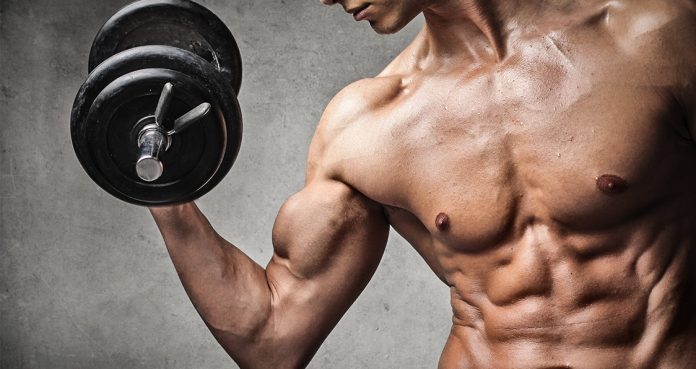
How To Gain Muscle Mass Quickly – A Guide On What To Eat And How To Train
Put On Muscle Mass Using This Technique
Many people quit the fit lifestyle when they join a gym to put on muscle mass but can’t see the weight scale budge in the right direction. Most people want to get results in the shortest time.
If you want to put on muscle on a timeline, you can’t afford to go wrong with the training, diet, and recovery. In this article, we’ll show you the way by telling you everything you need to know about gaining muscle on a deadline using a technique.
Setting The Right Target
Before you begin your transformation, you need to make sure you’re setting achievable goals. To keep your bulking phase sustainable, we suggest not wanting to put on more than 2lbs weight every week.
Whatever your diet is right now, add 500 calories to it if you want to put on 1lbs weight in one week. Adding 1,000 calories to your diet can speed up the bulking process and help you gain up to 2lbs a week.
How To Train To Put On Muscle Mass
Earlier, people used to overlook their diet when it came to building muscle but now a personalized training program has taken its place. Many people think that they will put on muscle mass irrespective of how they train unless their diet is right.
You can’t afford to put the training program on the back seat. If training routines were so inconsequential, the pros wouldn’t be spending thousands of dollars every month on their coaches trying to fine-tune their exercise routines, numbers of sets and reps they perform.
Designing The Right Training Program
If you’re a beginner or want to do a transformation, you should give your body at least 12 weeks to show major improvements. We would suggest you divide the 12 weeks into 3-week training routine splits.
3-weeks is the right amount of time for your body to get the most out of your workouts without letting it adjust to your routine. Change the intensity of your workouts week-on-week to push your muscles as you get closer to the 12-week mark.
For example – start your training program with a vanilla training program where you perform five exercises in a workout and do 3 sets of 10-12 reps. In the second week, switch to the German Volume Training (GVT) where you do 10 sets of 1 exercise before moving on to other exercises.
In the last week, you should increase the intensity of your workouts in a way that you’re only doing 3 exercises but are performing 5-7 sets and 15-30 reps on each lift. The increase in intensity will help in conditioning your muscles.
What And How Much To Eat To Put On Muscle Mass
If you’re planning to build muscle mass, your goal should be to eat around 3,000 calories a day. Of these 3,000 calories, 40% should come through carbs and the remaining 30% from proteins and fats each.
If your weight (muscle mass) isn’t increasing at the required pace, bump up your calories by 500 every time. We would suggest you wait for three weeks before modifying your diet. You need to give your body enough time to respond to your diet and training program.
You also need to make sure your recovery is on point. None of the diet and training improvements will do you any good until you’re recovery well. You should be sleeping between 7-8 hours every night.
How many calories a day do you eat currently? Let us know in the comments below. Also, be sure to follow Generation Iron on Facebook, Twitter, and Instagram.
Header image courtesy of Envato Elements

Sixteen High-Fiber Foods To Add To Your Diet
The Many Benefits Of A High-Fiber Diet
Fiber is a non-digestible carbohydrate that is found in beans, legumes, vegetables, fruits, and grains.
Consuming enough fiber each day is imperative for maintaining good health and function. Unfortunately, however, many individuals fail to consume enough.
This article will provide detail on sixteen excellent high-fiber foods that you should look to incorporate into your diet to boost your fiber intake.
The Health Benefits Of Fiber
Before moving on to the high-fiber foods, let’s first consider some of the health benefits associated with increased fiber intake.
1) Enhanced Digestive Health
Fiber plays an important role in regulating digestion and causing regular bowel movements. Failing to consume enough fiber may lead to constipation or diarrhea.Furthermore, consuming ample fiber every day may also enhance gut health as the consumption of specific fibers can promote the growth of good bacteria (1)
2) Decreases Cholesterol Levels
Cholesterol is a waxy-like substance that the body requires for maintaining the structure of cells and transport, amongst other things.Having a high level of a type of cholesterol, known as low-density lipoproteins (LDL), can increase your risk of developing heart disease. However, consuming adequate fiber has been found to reduce LDL levels (2).
3) Better Blood Sugar Regulation
Research on high fiber consumption has indicated that it may also help to regulate blood sugar levels and prevent them from spiking (3).Based on these findings, it has been suggested that consuming plenty of fiber may reduce the risk of developing type 2 diabetes.
4) Body Weight Management
For those who aspire to lose weight, eating a lot of fiber is recommended. This is partly due to the fact that fiber can suppress appetite and leave you feeling fuller for longer.It is thought that fiber draws in water in the intestine which consequently slows the absorption rate of nutrients thus increasing feelings of fullness (4).
5) Reduced Disease Risk
A combination of the above health benefits combine to reduce the risk of death from cardiovascular, infectious, and respiratory-related diseases. (5).
Sixteen High-Fiber Foods
This section will recommend sixteen foods that you should consider adding to your diet due to the fact that they contain a large amount of fiber.
High Fiber Beans and Legumes
1) Split Peas
With 16.3 grams of fiber per cup, increasing the amount of split peas you eat can have a positive impact on your total fiber intake.
Split peas are a highly versatile food which can commonly be found in dishes such as dhals and soups.There are two main varieties of split peas – green and yellow. Green split peas tend to be sweeter and less starchy than the yellow variety.
2) Lentils
A cup of lentils contains 15.6 grams of fiber. In addition to being high in fiber, lentils also contain a great amount of protein which plays an essential role in growth and repair.
Like split peas, lentils can be used in a variety of ways and are common ingredients in salads and soups.
There are different lentils types including brown, green, yellow, red, Puy, and Beluga. Be aware that the fiber content varies slightly between each type.
3) Black Beans
As well as being high in essential micronutrients such as manganate, folate, and thiamine, a cup of black beans contains 15 grams of fiber.
These nutrients can have an array of positive effects on bone, muscle, and heart health while also significantly reducing the risk of developing disease.
In summer, a black bean salad goes brilliantly with basically all foods that are cooked on the grill while in winter, considering adding them to vegetarian chili.
4) Lima Beans
While lima beans may not be the most popular choice for some, they do contain a great amount of fiber and can be used in many different ways in the kitchen.
Lima beans, sometimes referred to as “butter beans”, contain 13.2 grams of fiber per cup. Adding them to a range of meals can quickly and easily bump up your total fiber intake.
As well as being one of the main ingredients in succotash, lima beans can be added to soups, stews, and hummus, and salads.
High Fiber Vegetables
5) Artichokes
This strange-looking vegetable is loaded with key nutrients and antioxidants and also contains 10.3 grams of fiber per cup.
As well as potentially improving digestive health, artichokes have been associated with positively impacting cholesterol levels and blood pressure.
Artichokes are great boiled, braised, stuffed, and baked. They also go well with a variety of other foods including dairy products, chicken, seafood, and eggs.
6) Peas
Peas are particularly high in vitamins A and C which play important roles in the repair and maintenance of body tissues. In addition, per cup, peas provide 8.8 grams of fiber.
The simplest way to cook peas is to simmer them in slightly salted water for approximately five minutes. Pureeing peas is another commonly used method in cooking.One of the most well-known ingredients to pair with peas is fresh mint. However, peas also go extremely well with onion and ham too.
7) Broccoli
Along with lima beans, broccoli is another controversial food that some seem to love while others despise.
Similarly to peas, broccoli provides an abundance of vitamins A and C and also contains 5.1 grams of fiber per cup.
Often when cooking broccoli, only the florets are used and the stems discarded. However, the stems are edible and can actually be used in a variety of different snacks and meals.
8) Brussel Sprouts
With 4.1 grams of fiber per cup, Brussel sprouts are another vegetable that you should consider consuming more often.
Brussel sprouts are particularly high in vitamin K which plays a crucial role in bone health and blood clotting.
Sprouts are cruciferous vegetables that are typically cleaned, cut, and cooked to accompany a main course. They can go with a range of different foods such as chicken, pork, duck, tofu, and mustard.
High Fiber Fruits
9) Raspberries
As well as being low in calories, raspberries contain many vital nutrients and antioxidants that are critical for good health. They also provide 8 grams of fiber per cup.
It is very straightforward to add raspberries to your diet as they can easily be added to your favorite breakfast, lunch, and dinner dishes.
Considering the sweet taste that raspberries have, they are mainstays of many deserts. Adding a cup of raspberries to your deserts is a quick and easy way to get a fiber boost.
10) Blackberries
Blackberries are an absolute staple of summer. As well as tasting great, they can bring a number of health benefits which can partly be associated with the high fiber content.
There are 7.6 grams of fiber found in a cup of blackberries. In addition, this fruit is packed with vitamin C, vitamin K, and manganese.
Although commonly used in desserts, fruits such as blackberries are becoming more popular in savory foods such as salads, sauces, and even sandwiches!
11) Avocados
While you may not consider avocado to be a fruit, it technically is a single-seeded fruit. The avocado is held in high regard by health-enthusiasts and for good reason!
As well as having a variety of culinary uses, the avocado contains 6.7 grams of fiber per cup. Furthermore, it contains healthy fats that can protect against heart-related diseases.
Avocados can be used in a number of different ways and are commonly eaten with eggs, toast, pasta, and more. They can also easily be added to salads, soups, and smoothies.
12) Pears
At 4.6 grams per cup, pears are another excellent source of fiber. However, be aware there are many pear varieties and, therefore, the fiber content may differ.
In terms of health, as well as providing fiber, pears also contain folate, niacin, and vitamin A. These substances play an important role in energy synthesis and cellular function.
Pears go well with a number of dairy products such as mascarpone and creme fraise. However, they can also be paired with savory foods such as pork and nuts.
High Fiber Grains
13) Bran Flakes
Bran flakes a great source of fiber with one serving of bran flakes providing approximately 7 grams of fiber.
Additionally, bran flakes are also highly nutritious and are rich in plant compounds and key minerals such as niacin, iron, vitamin B6, riboflavin, thiamin, and folic acid.
While a bowl of bran flakes in the morning is a great way to start the day, adding them to smoothies, yogurts, and desserts can help to increase your fiber intake.
14) Wholewheat Pasta
Although perhaps less popular than white pasta, wholewheat pasta has many additional health benefits.
While white pasta contains approximately 2.5 grams of fiber per cup, wholewheat pasta contains more than double at 6.3 grams per cup!Pasta is one of the most versatile foods around. Consider cooking a wholewheat pasta-based meal that combines a number of the aforementioned high-fiber foods.
15) Pearled Barley
Barley is a grain that comes in a number of different forms – pearled, hulled, barley flakes, and barley grit. This grain is widely consumed and is commonly found in slices of bread and cereals.
As well as containing 6 grams of fiber per cup, pearled barley also nourishes the body with key micronutrients such as manganese, thiamine, riboflavin, and selenium.
When it comes to cuisine, barley is commonly associated with soups, such as Scotch broth. However, barley can be used in many different dishes including risotto, salads, and stews.
16) Oatmeal
When it comes to a nutritious and delicious breakfast, you need to look no further than oatmeal. Not only is it quick and easy to make, it can be combined with a variety of other high-fiber foods.While oatmeal contains a modest 4 grams of fiber per cup, adding other high-fiber products such as fruits and nuts can significantly increase the fiber content.
Oatmeal can also be added to baked goods such as muffins, granola bars, and cookies to boost fiber intake further.
Four Simple Ways To Add Fiber To Your Meals
There are a number of ways that will allow you to quickly and effectively boost your fiber intake. This section will highlight four simple methods that can have a positive impact on the fiber content of meals.
Flaxseeds
Although not mentioned in the previous section, seeds are an excellent and versatile source of fiber. To put this in perspective, just two tablespoons of flaxseeds contains 3.8 grams of fiber.
Therefore, adding flaxseeds to your oatmeal, baked goods, and yogurts is a simple way of boosting your total fiber intake. Additionally, consider breading fish or chicken using flaxseeds.
Chia Seeds
Leading on from the previous point, chia seeds contain an even greater amount of fiber than flaxseeds at 5.5 grams per tablespoon!When combined with water, these seeds create a paste that makes a great addition to many smoothies and desserts.
Carrots and Spinach
Although carrots and spinach don’t contain the same amount of fiber as the vegetables mentioned above, they can easily be grated down and added to a variety of meals to boost fiber content.
Food Processors
Food processors allow you to puree a number of these foods together to substantially increase fiber content. Consider pureeing a variety of cooked vegetables before adding them to sauces and stews.
Final Word
It is clear that consuming enough fiber per day is of great importance and something that should be prioritized. By incorporating a number of the foods outlined in this article, you can substantially increase your fiber intake and consequently experience these health benefits.
References:
1 – https://pubmed.ncbi.nlm.nih.gov/22555633/ Parnell, Jill A.; Reimer, Raylene A. (2012-01). “Prebiotic fiber modulation of the gut microbiota improves risk factors for obesity and the metabolic syndrome”. Gut Microbes. 3 (1): 29–34. doi:10.4161/gmic.19246. ISSN 1949-0984. PMC 3827018. PMID 22555633.
2 – https://pubmed.ncbi.nlm.nih.gov/9925120/ Brown, L.; Rosner, B.; Willett, W. W.; Sacks, F. M. (1999-01). “Cholesterol-lowering effects of dietary fiber: a meta-analysis”. The American Journal of Clinical Nutrition. 69 (1): 30–42. doi:10.1093/ajcn/69.1.30. ISSN 0002-9165. PMID 9925120.
3 – https://pubmed.ncbi.nlm.nih.gov/18287346/ Weickert, Martin O.; Pfeiffer, Andreas F. H. (2008-03). “Metabolic effects of dietary fiber consumption and prevention of diabetes”. The Journal of Nutrition. 138 (3): 439–442. doi:10.1093/jn/138.3.439. ISSN 1541-6100. PMID 18287346.
4 – https://pubmed.ncbi.nlm.nih.gov/10721886/ Burton-Freeman, B. (02 2000). “Dietary fiber and energy regulation”. The Journal of Nutrition. 130 (2S Suppl): 272S–275S. doi:10.1093/jn/130.2.272S. ISSN 0022-3166. PMID 10721886.
5 – https://www.ncbi.nlm.nih.gov/pmc/articles/PMC5731843/ McRae, Marc P. (2017-12). “Dietary Fiber Is Beneficial for the Prevention of Cardiovascular Disease: An Umbrella Review of Meta-analyses”. Journal of Chiropractic Medicine. 16 (4): 289–299. doi:10.1016/j.jcm.2017.05.005. ISSN 1556-3707. PMC 5731843. PMID 29276461.

Nusret Gökçe, Owner Of Nusr-Et Steakhouses, Shares Daily Diet Routine
Nusret Gokec is a well-known chef who has his own secrets in his diet.
There have been plenty of celebrity workouts and diet plans released. Actors are famous for their ability to take on a role on the big screen and for some, their physique is part of the equation. This is especially true for names like Dwayne “The Rock” Johnson, Mark Wahlberg, and Zac Efron. There are other avenues that take part as well and Nusret Gokce is involved.
In an Instagram post,Gokce, well-known chef and owner of Nusr-Et steakhouses, showed off a lean physique and his daily diet routine.
“Exercise and nutritions are like fingerprints – personalized.My daily program starts from two room temperature glasses of still water and 4 apricots. After half an hour I drink one cappuccino and than I start my workout. After workout I eat breakfast which is 250gr steak, chickpea, lentils, beans and black rice. For lunch I’m steaming any vegetables and 250gr steak. Afternoon I have a yogurt with grapes molasses, single espresso. For dinner at 9pm I eat beetroot salad and steak. After dinner I drink only water. No more food.”
It is not surprising that the Turkish chef, known as “Salt Bae”, has a majority of his diet wrapped up in steak. Gokce has opened a successful chain of steakhouses that have locations all over the world in places such as London, Dubai, Istanbul, Turkey, Greece, and multiple in the United States — New York, Miami, Boston, Dallas, and Beverley Hills.
Nusret Gökçe became famous on the Internet in 2017 after a video blew up of him seasoning steak. The strange way he sprinkled salt on the meat became popular on social media. Gokce has embraced the popularity and now has 38.6 million followers on Instagram. This is where he shared his diet plan for his viewers.
In his post, Gokce shows off a physique that is slim with very little fat present. His diet includes apricots, steamed vegetables, beans, rice, espresso, and chickpeas — along with steak.
Nusret Gökçe is going to continue to supply the world with his gift of making incredible steaks. Maybe he will dabble into the world of nutrition as well moving forward. He has already shred some knowledge for his social media.
For more news and updates, follow Generation Iron on Facebook, Twitter, and Instagram.
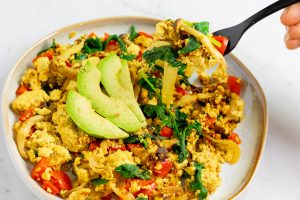
Want To Ditch Meat? Tips And Tricks On How To Convert To A Plant-Based Diet
Here are some tips to convert to a plant-based diet.
So this article is going to be coming to you from a personal perspective, as I have been plant based for over 5 years now and prior to that was practicing keto on and off.
Now my biggest concern prior to considering plant based was, ‘so what do I eat?’ and ‘what is my protein source going to be?’
As If It doesn’t come from meat, eggs, poultry and dairy then where will it come from?
Well I would essentially be getting the protein from the same place the animals get theirs from, plants. (among other things)
So today I am going to be giving you a breakdown to alternative plant based options which are readily available, and making sure you don’t die of protein deficiency …
Protein Comparison
Tofu Scramble Instead Of Scrambled Eggs
Per 100g
So let’s begin by breaking it down with eggs.
One of the alternatives to eggs is tofu, as it’s a great source of protein and low in carbs too and can be scrambled.
Scrambled Tofu
Scrambled Eggs
Calories
102.7
113.4
Fat
7.7g
7.5g
Carbs
2.7g
0.6g
Protein
7.5g
10g
Eggs snatches the win on the protein front but tofu is not far behind and actually has less calories.
Steak v Ground Beef v Seitan v Tempeh v Impossible Burger Beyond Ground Beef
Per 100g
Let’s get to the meat of the matter, red meat! Take a look at the comparisons below:
Steak
Ground Beef
Seitan
Tempeh
Impossible
Beyond ground beef
AP
AP
PB
PB
PB
PB
Calories
218
274.1
153.8
196.4
213.6
218.8
Fat
10.8g
17.8g
3.5g
11.4g
12.5g
15.8g
Carbs
0.5g
0g
7.1g
7.9g
8g
2.6g
Protein
28.1g
27.6g
26g
20g
16.g
17.5g
AP – Animal Product
PB – Plant Based
*
As you can see seitan comes lowest for calories, and lowest for fat content. Ground beef takes the lowest carb content and by not much steak takes the highest protein content. But as you can see the plant based options for seitan and tempeh boast a very high protein content per 100g.
Now let’s turn our attention to dairy.
Milk v Oat Milk v Cashew Milk v Soy Milk v Hemp Milk v Almond Milk v Coconut Milk
Per 1 Cup (244g)
Cow’s MIlk
(full fat)
Cow’s Milk (1%)
Oat Milk
Cashew
Milk
Soy Milk
Almond Milk
Hemp Milk
Pea
Milk
AP
AP
PB
PB
PB
PB
PB
PB
Calories
122
102
140
25
100
30
50
100
Fat
4.8g
2.4g
7g
2g
4.5g
2.5g
5g
4.5g
Carbs
12g
12g
11g
1g
9g
1g
1g
6g
Protein
8.1g
8.2g
8g
0.5
8g
1g
2g
8g
Plant-Based Milk With Additional Protein
So if protein is what you really desire then there are plant based options available with additional protein.
Orgain Milk Almond Organic Unsweetened
Silk Unsweet Almond & Cashew Protein
Silk Unsweet Ultra Plant-Based Protein Drink
EdenSoy Unsweetened Organic Soy Milk
Calories
80
110
180
120
Fat
3.5g
7g
9g
6g
Carbs
4g
2g
5g
4g
Protein
10g
10g
20g
12g
Cheese v Nutritional Yeast
28g
I know cheese is addictive for many people out there and is very difficult to give up but a great protein filled alternative is Nutritional Yeast
The reason I didn’t select a plant based cheese alternative is that many plant based cheeses lack the protein content required so nutritional yeast is a great option.
Cheese
Nutritional Yeast
Calories
115
92.4
Fat
9,4g
2g
Carbs
0.9g
10.4g
Protein
6.5g
12.5g
As you can see Nutritional Yeast, other than having more carbs has less calories, fat and also has more protein per 28g (approx 3.3 tbsp).
Chicken v Tempeh
100g
Now let’s look at chicken, I am going to compare it to tempeh which we also looked at earlier. I could compare to a faux chicken but I wanted to compare to a purer food source
Chicken
Tempeh
Calories
221.9
196.4
Fat
13.1g
11.4g
Carbs
0g
7.9g
Protein
23.7g
20g
So tempeh is lower in calories and in fat, but chicken has less carbs and just a tad more protein. But Tempeh has a considerable amount of protein per 100g also
So as you can see we have covered quite a bit but this is merely scratching the surface.
If you are considering going plant based use this as a guide but also experiment and do your research, go to the store and look at labels, it may surprise you as to which items are also accidentally plant based
Eggs and Tofu
https://www.eatthismuch.com/recipe/nutrition/easy-paleo-scrambled-eggs,255172/
https://www.eatthismuch.com/food/nutrition/tofu-scramble,34942/
*
Beefs and Plant-Based Meats
https://www.eatthismuch.com/food/browse/?q=steak&type=recipe&nutrition_display=
https://www.nutritionix.com/food/ground-beef
https://www.nutritionix.com/i/sweet-earth/traditional-seitan/54fd12a8da4d5c1d0b25d375
https://www.nutritionix.com/food/tempeh
https://www.nutritionix.com/i/impossible/burger-made-from-plants/5d8f06903fd1dc45742c5221
https://www.nutritionix.com/i/beyond-meat/beyond-beef-plant-based-ground/5d1ef894d42ac192589b87fb
Milk
https://www.nutritionix.com/food/milk
https://www.nutritionix.com/food/1-milk
Vanilla Protein Oat
https://www.nutritionix.com/i/silk/cashew-milk-unsweetened-vanilla/582028ca127741c124c7e67a
https://silk.com/plant-based-products/soymilk/original-soymilk/
https://www.nutritionix.com/i/hemp-yeah/unsweetened-original-hemp-milk/5eb265dc6f38177a7be579fc
https://www.ripplefoods.com/original-plant-milk/
https://orgain.com/products/organic-protein-almond-milk-unsweetened-vanilla
https://silk.com/plant-based-products/plant-based-protein-beverages/unsweet-protein/
https://silk.com/plant-based-products/plant-based-protein-beverages/silk-ultra/ultra-unsweet/
https://store.edenfoods.com/unsweetened-edensoy-organic/
Cheese and Nutritional Yeast
https://www.nutritionix.com/food/nutritional-yeast
https://www.nutritionix.com/food/cheddar-cheese
Chicken and Tempeh
https://www.nutritionix.com/food/chicken
https://www.nutritionix.com/food/tempeh
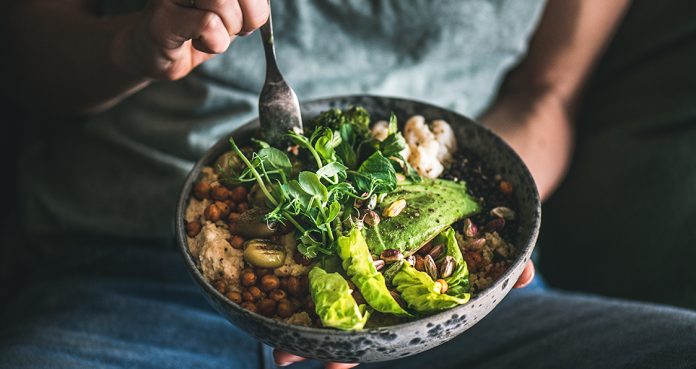
The Best Pre and Post Workout Meals You Can Possibly Eat
Eat This Before and After Your Workout
There is no way you can build muscles mass if you’re not eating right before and after your workout. Many people don’t understand the fact that they break down muscle tissue in the gym and their muscles grow bigger and stronger while they’re outside the iron paradise.
What you eat pre and post-workout acts as the fuel for your body and determines the fate and size of your muscles. If you have been struggling with your pre and post-training nutrition, this article is for you.
First Things First
Before you decide on what you should eat pre and post-workout, you need to make sure it is in line with your diet plan. The before and after-training meals should not only give you a burst of energy but should also add to your daily nutrition goal.
Your pre-workout meal should have high carbs, and moderate proteins and fats as your muscles will need the glucose for energy which can be derived from breaking down carbohydrates in the body.
The post-workout meal should be high in protein, moderate in carbs and restrictive in fat content if your primary goal is to build muscle mass. Consuming fats right after your workouts can slow down the absorption of protein by your muscles and you might end up leaving a lot of gains on the table.
The Perfect Pre-Workout Meal
2 Egg Whites, 1 Whole Egg, 2 Slices of Whole Wheat Bread with Black Coffee (or a Pre-Workout Supplement) – 226 Calories 28g Carbs 18.9g Protein 6.2g Fats
You need to remember that you need to eat your pre-workout meal at least 45-minutes before your workout. Eating your meal too close to your workout can be worse than not eating at all.
In your pre-workout meal, you’ll be eating two egg whites and a whole egg. You have a choice of consuming the eggs boiled or as an omelet. Along with the eggs, you’ll be eating two slices of bread. You can also include green vegetables like broccoli or salad in this meal.
If you’re someone who likes to drink a pre-workout supplement before a training session, you should be doing it after eating the meal. You don’t need to fret if you don’t have the extra dollars for the pre-workout drink. A cup of black coffee should do the trick.
The Best Post-Workout Meal
Whey Protein Shake, 100g Chicken Breast, and Half Cup Rice – 398 Calories 27.5g Carbs 56.2g Protein 5.8g Fats
You’ll be having your post-workout meal in two shifts. You’ll have your post-workout whey protein shake right after you finish your weight training. We also recommend you do a HIIT cardio session after drinking your protein shake.
After completing your cardio session, wait for ten-minutes before eating the remainder of your post-training meal. The good old chicken breast and rice have been a bodybuilder favorite for a long time.
By following the aforementioned diet, you can rest assured your muscles are properly fed and the groundwork has been laid for optimal muscle gain.
What do you eat currently before hitting the gym? Let us know in the comments below. Also, be sure to follow Generation Iron on Facebook, Twitter, and Instagram.
Header image courtesy of Envato Elements
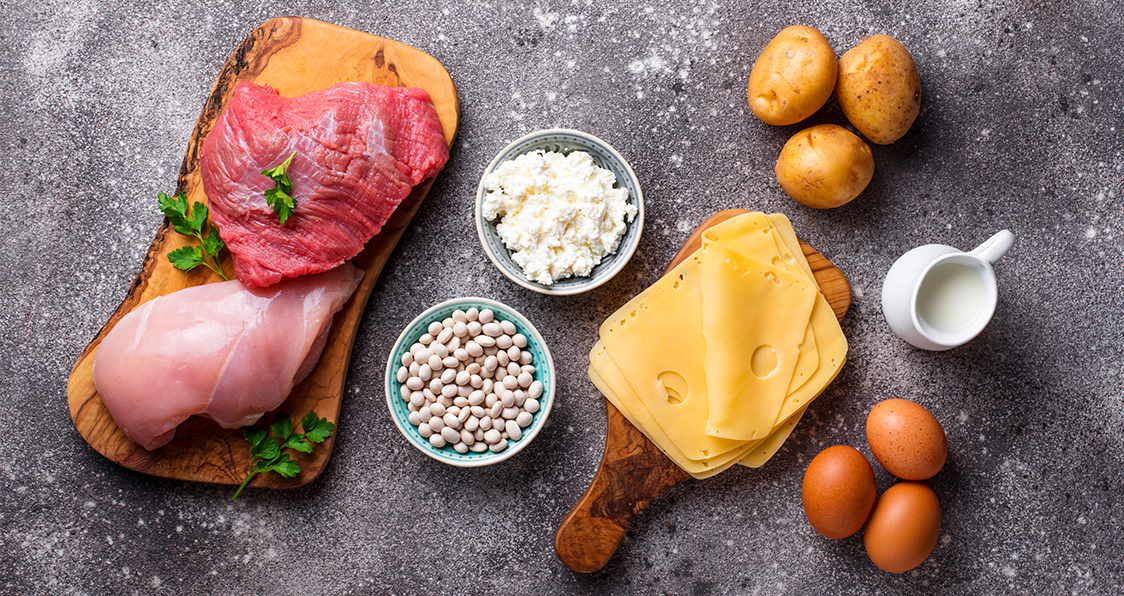
Avoid These 5 Dieting Mistakes To Make Progress
5 Most Common Dieting Mistakes
It’s no secret that following the right diet is the key to losing weight or gaining muscle mass. Designing the right diet is like solving the matrix for most people, and they give up without trying.
Most of the people who do start a diet, give up soon after they don’t see any results. Almost all diets fail because of a few fundamental problems. If you avoid the common mistakes, you’ll be on your way to making serious progress.
Cutting Out The Fats Completely
When some people start a diet plan, they take fats to be the villain and design their diets to exclude the macronutrient from their diet completely. Removing fats from their diet is a big reason most people don’t see any results while dieting.
Fats are an essential macronutrient and play a vital role in joint and bone support along with maintaining an energy reserve in the form of fat which can be used by the body in times of emergency. Not consuming the proper amount of fats in your diet forces your body to store fat and can lead to joint pains and other functioning issues.
Not Doing Cardio
While following a customized diet plan for reducing fat or building muscle will start working on its own, you’ll need to add cardio to the mix to fasten up the process especially if your goal is weight loss.
Adding cardio to your training routine is a great way of maintaining a calorie deficit which will help you shed the extra kilos, and reduce the body fat percentage. You should consider adding a 10-minute session of HIIT cardio to your program.
Misunderstanding Carbs
After fats, carbohydrates are considered to be the enemies of fat loss by some people. Many of the rookies try to bring down their daily carb intake into double digits unknowing it’s going to do more harm than good.
As a rule of thumb, you shouldn’t drop down your daily carb consumption below 1g per pound of bodyweight until you’re in the final weeks leading up to a competition. If you’re reading this article, chances are you’re not going to step on stage anytime soon.
Becoming Way Too Strict
Many people get too strict and serious about their diets when they start out. They cut out all the fats and carbs from their diet and stick to a narrow and incomplete diet. These people eventually burn out and quit the fit lifestyle.
When you’re starting out, you need to follow a rational approach and gradually add or subtract from your diet. Cutting out your normal food too fast can make you feel drained out and you might end up deciding this lifestyle is not for you.
Jumping Ships
Some people get disheartened when they don’t see the results they were hoping to see. Thanks to the advancement in the dietary space, there are many different diets to follow and people sometimes get spoilt for choice.
When some people don’t see results, they end up deciding that the diet they are currently following isn’t suiting them and switch to a new diet. You need to give your body time to adjust to a diet so you can see results.
How many different diets do you know about? Let us know in the comments below. Also, be sure to follow Generation Iron on Facebook, Twitter, and Instagram.
Header image courtesy of Envato Elements
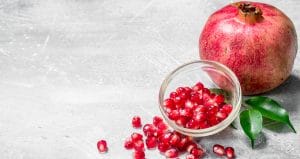
Green Alert: Top 8 Fruit and Vegetables to Boost Your Gains
When it comes to talking about diet, protein has always been top of that conversation, you can hear guys at the gym saying to one another, ‘yeah bro, I take 2 grams of protein per lb of bodyweight, that’s what you need to do to build solid muscle, you should do the same’…blah blah blah blah. Bro science at work!
But what about your carbs, fats, forget that, are you even allowed to eat fruit and vegetables anymore? As they obviously don’t have any protein in them…
Well fear not as the old adage of, ‘don’t forget to eat your greens’ isn’t dead (just yet), as fruit and vegetables have more benefits than you may have initially thought.
So I am going to breakdown the Top 8 fruit and vegetables that can help boost and take your gains to the next level.
1. Pomegranates:
Research from a 2016 study found that this fruit accelerates muscle recovery and soreness.
The study stated that pomegranates ‘seems to ameliorate (make) the capacity to adhere to an intensive training program. Therefore, elite weightlifters are advised to use natural POMj (pomegranates), during intensive training program and competition to accelerate muscle recovery’.
2. Peppers:
The brighter the colour the better an antioxidant (which is essentially a substance that helps protect against disease).
Peppers are high in vitamin C, as half a cup gives you 30% of your Recommended Daily Allowance (RDA).
According to a 2013 study concluded that the ‘human skeletal muscle is highly responsive to vitamin C intake, and exhibits a greater relative uptake.’
The benefit here is that vitamin C can help process carnitine, and carnitine is essential in energy production, as it transports fatty acids into the mitochondria so they are used to produce energy.
3. Soybeans:
Unlike other vegetables this is a great source of protein, (and can also come in the form of edamame), but it also boasts a high content of leucine (which is 1 of the 3 main branched chain amino acids, which are beneficial in boosting muscle growth and performance).
Leucine is particularly beneficial as it can help with the growth and repair of bone and muscle and is also beneficial in the production of growth hormone.
So add a cup of soybeans to your next meal.
4. Tomatoes:
As a regular fruit, yes I said it, it’s a fruit, is a great antioxidant, and it also contains lycopene, (which is generally found in bright red fruit and vegetables).
A study from 2011 concluded that ‘lycopene in tomato juice has a beneficial effect on the oxidative stress on athletes and will improve their performance level when used as a supplement.’
Oxidative stress is the result of physical exertion of endurance exercise which leads to a depletion of energy, thus causing an imbalance and compromise of normal body functions.
A 2016 study also found that the ‘ingestion of tomato juice prior to exercise (pre workout), attenuate exercise-induced fatigue. Tomato contains many components that could prevent fatigue via synergistic and/or additive effects’.
So maybe swap out your current pre workout for tomato juice instead.
5. Pineapple:
Have you ever wondered why some bodybuilders eat their chicken with pineapple, or why it is added to pizza?
Well believe it or not there actually is a valid reason, well maybe not for the pizza, but pineapples contain the enzyme bromelain, which is a complex mixture of protease, and protease is an enzyme which breaks down proteins and peptides into amino acids.
So having a slice of pineapple next to your protein doesn’t look so crazy now.
6. Kimchi:
Made from fermented vegetables, and contains the bacteria of the Bacillus species and helps produce the three main digestive enzymes.
The enzymes in question are: Protease, which is essential for breaking down protein into amino acids.
Amylases, which is an enzyme which helps break down carbohydrates into simple sugars which the body can then use for energy.
And also contains Lipases, which help breakdown fat into fatty acids and glycerol and are then absorbed into the intestines.
7. Asparagus:
Asparagus is great with bodybuilders as it’s a great diuretic (makes you pee more), so great pre contest. And the distinct urine smell from eating asparagus comes from asparagusic acid.
As well as that, asparagus is full of vitamin K, which is essential for strong bones and healthy blood clotting, and there seems to be evidence suggesting that vitamin K and vitamin D work together ensuring bone density.
If you are adding asparagus to your diet, you are now warned that your pee will smell bad.
8. Cranberries:
Another great fruit which will make you run to the toilet as it also has diuretic properties, cranberries are particularly beneficial as they are able to remove fluid without eliminating potassium from the body.
Cranberries also contain manganese, which is essential for bone development and maintenance, and they are also high in antioxidants which can help reduce the risk of chronic disease.
Add a cup of cranberry juice to your diet, or even add some to your post workout shake.
Conclusion
So you now have a clearer idea of the important, and not so obvious role that fruit and vegetables play in our journeys to getting bigger and stronger. And this list is just the tip of the iceberg… (lettuce)
So as your mother would say. ‘ don’t forget to eat your greens’.
References:
https://academic.oup.com/ajcn/article/97/4/800/4577085
https://jissn.biomedcentral.com/articles/10.1186/s12970-017-0189-4
https://www.ncbi.nlm.nih.gov/pmc/articles/PMC5072630/
https://www.ncbi.nlm.nih.gov/pmc/articles/PMC4492638/
https://www.ncbi.nlm.nih.gov/pmc/articles/PMC6245118/
https://www.intechopen.com/books/soybean-for-human-consumption-and-animal-feed/soybean-amino-acids-in-health-genetics-and-evaluation
https://jissn.biomedcentral.com/articles/10.1186/1550-2783-8-S1-P21
https://www.scirp.org/journal/paperinformation.aspx?paperid=67360
https://pubmed.ncbi.nlm.nih.gov/23304525/
https://pubmed.ncbi.nlm.nih.gov/24456350/
https://pubmed.ncbi.nlm.nih.gov/11684396/
https://pubmed.ncbi.nlm.nih.gov/22747948/
https://pubmed.ncbi.nlm.nih.gov/9251891/
https://pubmed.ncbi.nlm.nih.gov/14733499/
https://pubmed.ncbi.nlm.nih.gov/20443158/
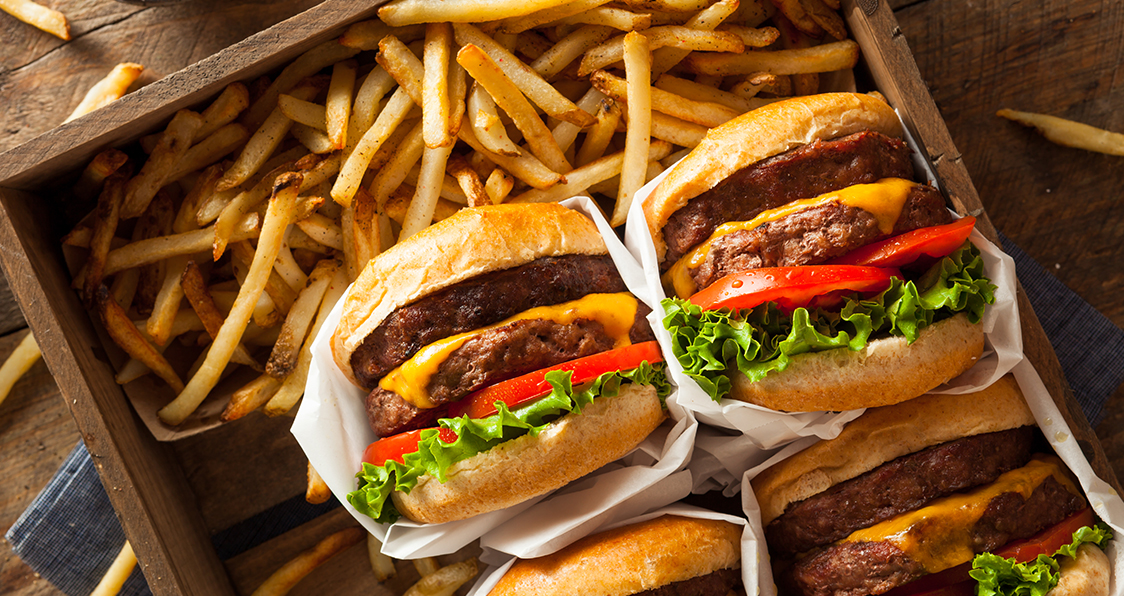
This Is How You Can Overcome A Cheat Meal
Ways To Overcome Your Cheat Meals
Whether it’s a planned cheat meal or accidental, the regret of eating junk food can linger in your head for days. While you can’t go back in time and undo what you did, you certainly can make some adjustments which can fix things and lower the cheat meal regret.
Almost all the diet plans have a planned cheat meal so you don’t have crazy cravings but these plans don’t take in consideration how much and when you sit down to eat. The saddest part about a cheat meal is the fact that most of what you’ll be eating is going to be empty calories.
Empty calories have no meaningful macronutrients in them. Since the empty calories have disproportionate proteins, fats, and carbs, they are useless for the body. The empty calories sit like useless fat in your body waiting to be burnt off.
Make Adjustments To The Next Day
If your cheat meal does go out of hand, you should do more than just regret it. Calculate the number of surplus calories you consumed in your junk meal. Apps like MyFitnessPal or a simple Google search will provide you with the nutritional values for most of the major fast-food restaurant items.
If you had 1000 extra calories in your cheat meal the previous day, you should take out around 50-60 grams of carbs and 10-20 grams of fats from your diet the next day to reduce the impact of the empty calories.
We won’t recommend reducing your protein intake especially if you’re on a muscle-building program. Making such small changes to your diet the next day can greatly reduce the feeling of regret and the negative impact of the food after having a big cheat meal.
Time Your Cheat Meals
You need to plan your cheat meals in such a way that you have time to burn them off later in the day. You should also consider switching your cheat day to a training day. Having a cheat meal on rest days can add to the negative effects.
You also need to avoid having your cheat meals near your bedtime. We recommend you have your craving food in the afternoon so your body has enough time to burn it off while you’re active and you can go for a HIIT cardio session later in the day.
While you plan your diet plan, you should also plan your cheat meals. You shouldn’t go to a fast-food joint and randomly order whatever you like. With a random approach, you’re more likely to eat more than you should.
Turn Your Cheat Meal Into Motivation
You shouldn’t let the memories of your cheat meal linger in your head. If it does happen, turn the feelings of having committed a sin into the source of motivation to go harder in the gym to achieve your dream physique.
In the end, whatever your cravings might be, you can always make healthier choices. With the growth in the F&B industry, you can always find a healthier and better-tasting alternative to your favorite hamburger or pizza.
Which is your favorite cheat meal? Let us know in the comments below. Also, be sure to follow Generation Iron on Facebook, Twitter, and Instagram.
*Header image courtesy of Envato Elements
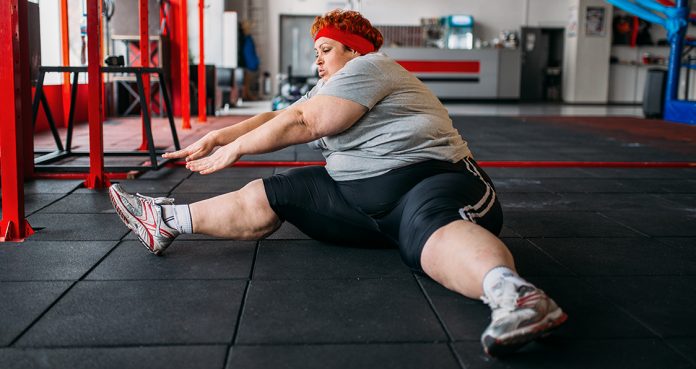
6 Reasons Why You’re Not Losing Fat
Avoid These 6 Mistakes To Lose Weight
Many people get a gym membership to lose weight, and most of them are not happy with their progress. Losing fat is easier said than done. While people might take different approaches to lose weight, most of them fail for the same reasons.
Indiscipline
You need a high level of discipline to lose fat. Some people think training for a couple of days a week is enough to lose weight. They set themselves up for disappointment with this approach and then act shocked when they don’t get the desired results.
You need to be disciplined with your training, diet, and recovery programs if you want to shed the extra kilos. You can’t afford to miss a single training session, meal or undersleep if you want the needle to budge in the right direction.
Undervaluing Your Training Program
Some people make the mistake of thinking a diet plan is all that matters in a weight loss program. They completely overlook their training plans, spend a comfortable half an hour on a piece of cardio equipment, and call it a day.
If your goal is to lose weight, you’ll have to follow a structured cardio training plan which should include a HIIT (High-Intensity Interval Training) or LISS (Low-Intensity Steady State Training). You should be willing to give your training sessions all you’ve got.
Setting A Goal
When setting out to shed the extra kilos, most people make the mistake of not having a specific weight loss goal. You need to quantify the amount of weight you want to shed in order to have the right diet and training plan.
Having a specific goal can help you follow a timeline and will keep you accountable. If you don’t see the desired results after setting a goal and making a plan to achieve it, you can go back to the drawing board and make the necessary adjustments.
Not Following a Customized Diet Plan
Many people don’t want to spend the time, energy or money on a customized diet plan. They instead follow a vanilla diet plan given to them by a gym bro and are surprised and anxious when they don’t see results.
Every person has a different lifestyle, and their diet will vary depending on their goal. You need to figure out your daily calorie intake goal with your macronutrient targets and design your diet according to your lifestyle.
Not Understanding The Role of Fats and Carbs
In recent times, thanks to the internet, more people have come to know about macronutrients. Many people mistake the role of fats and carbs in their diet. They think eating fats are what causes fat to deposit on their body and go on to cut it from their diet.
After they cut fats and still don’t see results, carbohydrates become their easy second target. In the process of cutting these two essential macronutrients from their diet, they do more harm to their bodies than good. Reducing the carb and fat intake below the recommended levels can cause problems in your body functioning.
Improper Recovery
While cardio and training play a vital role in losing weight, some people take it to the next level by pushing their bodies to the extremes. On top of it, these people don’t give their bodies proper time to recover from their workouts.
Being overtrained is worse than not training at all. If your recovery time doesn’t seem to work and you feel sore for more than a couple of days after your workouts, you should consider taking supplements to improve your recovery.
Header image courtesy of Envato Elements
Are you satisfied with your weight loss?
Let us know in the comments below. Also, be sure to follow Generation Iron on Facebook, Twitter, and Instagram.
